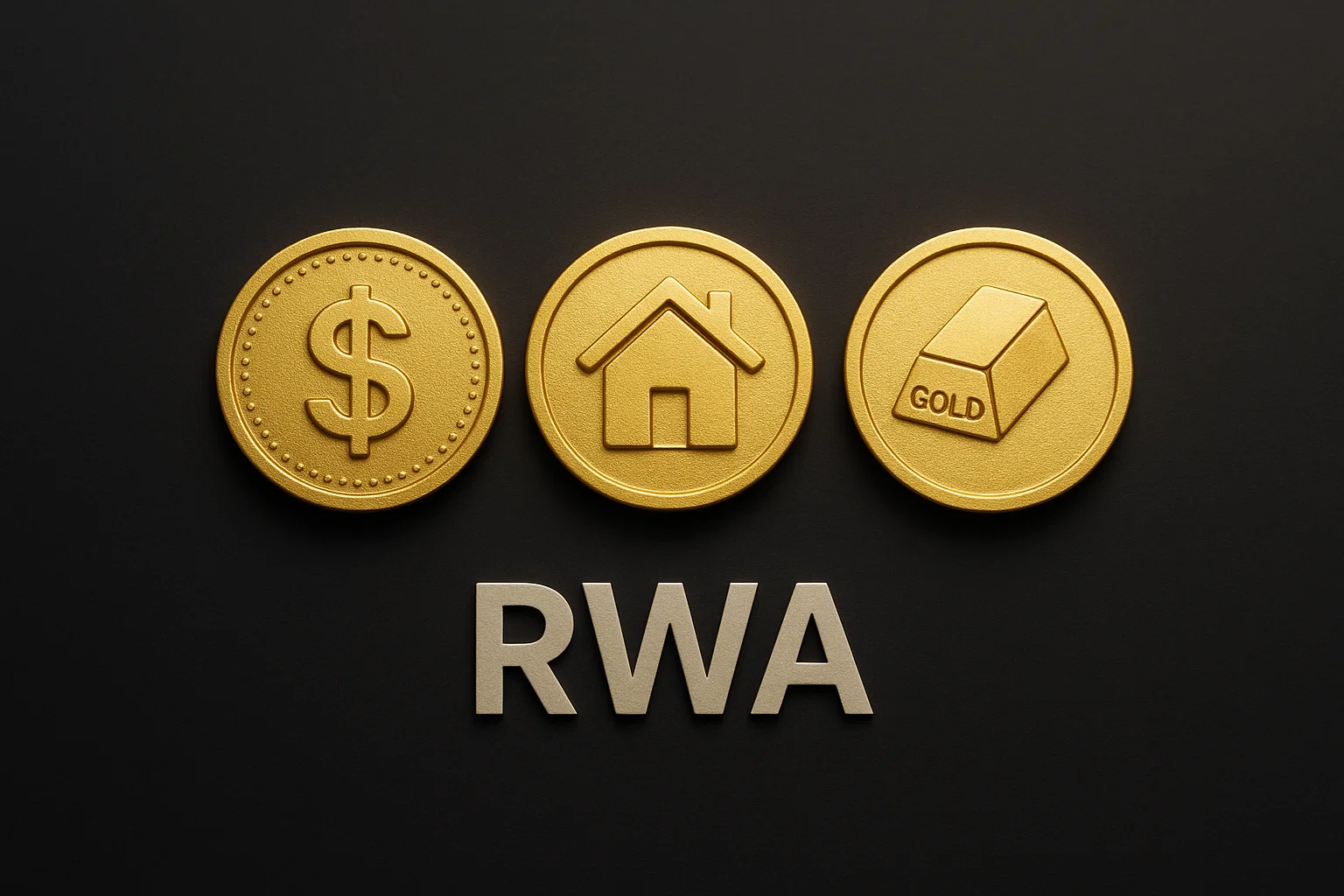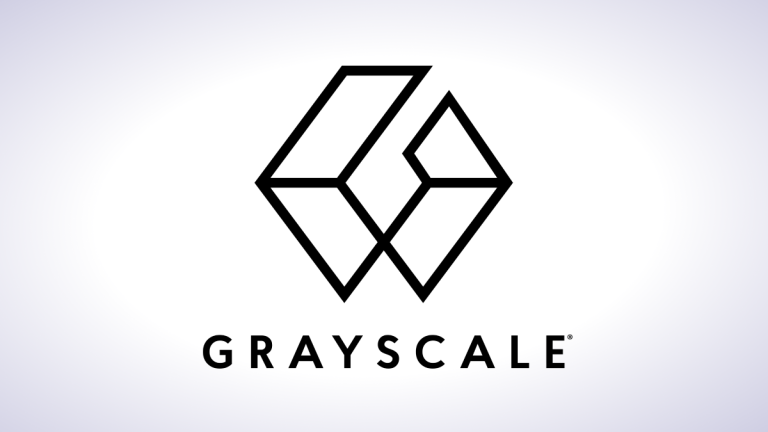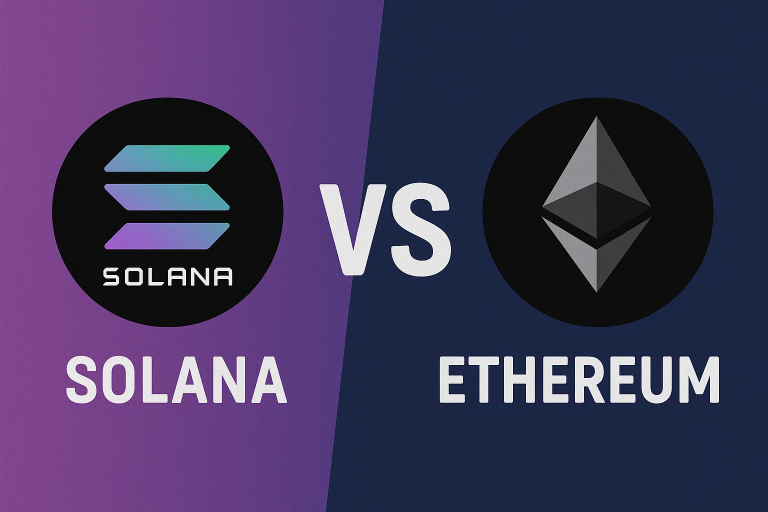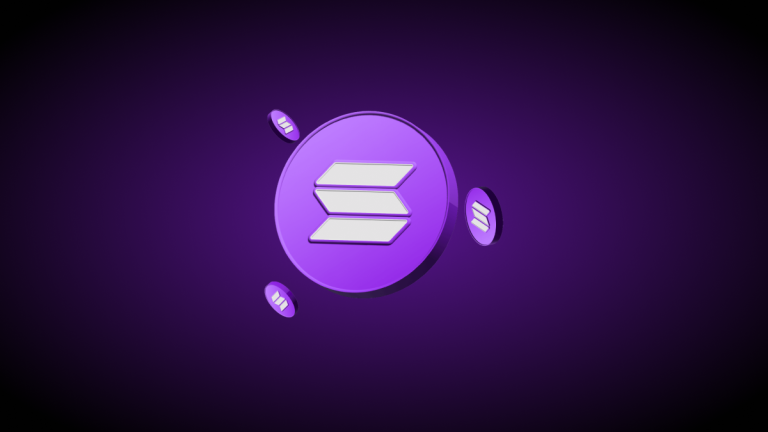Exploring the future of digital economy
Real-World Assets (RWA): Sector Overview and Opportunities for USDT Portfolios

Market Overview & Current Landscape
Real-World Assets (RWA) offer investors the opportunity to gain exposure to traditional financial instruments—such as government bonds, real estate, and private credit—via blockchain technology. As of May 2025, the total value of tokenized RWA has surpassed $24 billion.
Over the past year, the RWA market has grown by 32%, with U.S. Treasury bonds growing by 179% and private credit expanding by 40%. This growth is driven by rising interest rates and increasing institutional interest in on-chain yield opportunities.
Key Developments
DeFi Meets RWA
- The MakerDAO protocol (now rebranded as Sky) has deployed an additional $1 billion into tokenized bonds via Spark Protocol, bringing its total RWA exposure to $2.4 billion.
- Spark now controls over two-thirds of the tokenized U.S. Treasuries market, which totals around $3.5 billion .
Institutional Adoption Accelerates
- Major financial institutions such as BlackRock, Franklin Templeton, WisdomTree, and Fidelity have launched blockchain-based bond funds:
- BlackRock’s BUIDL fund via Securitize has already reached nearly $2.9 billion.
- Franklin Templeton’s BENJI fund stands at approximately $740 million.
CeFi + DeFi Integration
- Centralized finance (CeFi) firms are issuing tokens but utilizing open blockchains.
- DeFi protocols like MakerDAO and Aave are incorporating these tokens as collateral, effectively integrating RWAs into the DeFi ecosystem.
Blockchain Diversity
- While Ethereum remains the dominant chain (~58% of RWA sector), assets are also being issued on Polygon, Tron, Arbitrum, ZkSync Era, and others.
Leading Protocols, Platforms, and Assets
The RWA space encompasses both CeFi-issued tokens (often representing real-world funds wrapped into digital assets) and native DeFi protocols that bridge off-chain assets onto-chain.
Dominant Asset Categories
Blockchain Distribution
- Ethereum: 58%
- ZkSync Era: 19%
- Stellar: 4.4%
- Others: <3% each
Notable Success Stories
U.S. Treasury Bonds
- Short-term U.S. government debt instruments (e.g., Treasury bills and money market funds) represent the largest category of RWA by capital volume.
- Centrifuge has tokenized $250 million in T-bills , offering investors stable, low-risk returns of ~4–5%.
Stablecoin Tokenization
- Major stablecoins like USDT and USDC are backed by real-world assets such as cash and U.S. Treasuries.
- Emerging yield-bearing tools include:
- stUSDT (Tron): Converts USDT into a yield-generating token via investments in U.S. Treasuries (~4–5% APY).
- DAI Savings Rate (DSR) (MakerDAO): Offers several percent annual return by investing DAI in real-world assets.
Commercial Real Estate
- A relatively small but rapidly growing segment, enabling fractional ownership of income-generating properties.
- RealT has tokenized single-family rentals in cities like Detroit and Chicago, paying weekly rental income to token holders (~6–12% APY).
Private Credit
- Accounts for roughly 70% of the RWA sector.
- Key platforms include Centrifuge, Maple Finance, and TrueFi, originally lending platforms that have expanded into real-world lending markets.
Risk-Based Yield Strategies
Low-Risk: Government Debt (4–5% APY)
Ideal for minimal risk tolerance.
Options:
- CeFi Money Market Tokens:
- BlackRock BUIDL
- Franklin BENJI
- Superstate USTB
- Ondo OUSG/USDY
These tokens represent portfolios of short-term U.S. Treasuries managed by major financial firms (~4.5% yield). KYC/AML required.
- DeFi Savings Vaults:
- DSR (MakerDAO)
- Spark savings vaults
Offer up to 5–8% APY without requiring KYC.
- Stablecoin Staking:
- stUSDT (Tron) offers 4–5% APY for USDT holders.
Medium-Risk: Real Estate & Secured Credit (6–10% APY)
Tokenized Real Estate:
- Platforms like RealT provide rental income (6–9% net yield), though liquidity is limited and risks include vacancies and maintenance costs.
Trade Finance:
- Short-term loans secured by accounts receivable.
- Examples: Centrifuge pools, Maple Finance.
- Yields range from 6–10%, with terms typically under one year.
Institutional Credit Funds:
- Tokenized funds from large firms like Apollo and KKR offer 8–10% APY.
- Example: Apollo Diversified Credit Fund (ACRED) .
High-Risk: High-Yield Credit & Exotic Assets (>10% APY)
Unsecured Credit:
- Pools like TrueFi offer 15–20%+ APY, but carry higher default risk.
Distressed Tokens:
- Buying undervalued tokens trading at discounts due to temporary issues (e.g., FIDU after defaults).
Exotic Assets:
- Tokenized royalties (music), litigation financing, or art-backed loans.
- High risk but potential for double-digit yields.
Sample $5M Portfolio Allocation
(Note: This is illustrative only and not investment advice.)
Given the institutional scale of this portfolio, stability, liquidity access, and operational risk mitigation are critical.
Ultra-Low Risk ($2.5M – 50%, Yield: 4.5–5.2%)
These funds are fully backed by U.S. Treasuries, pay daily interest, and require KYC verification.
Low-Medium Risk ($1.25M – 25%, Yield: 6–9%)
Medium-High Risk ($750K – 15%, Yield: 10–14%)
High Risk ($500K – 10%, Yield: 15–20%)
Useful Resources
- RWA Dashboard : https://app.rwa.xyz
- Tokenized Stocks : https://defi.backed.fi
Conclusion
The RWA sector is experiencing robust growth, driven by rising interest rates, regulatory clarity, and increased institutional participation. With a wide variety of asset classes and risk profiles, it presents compelling opportunities for diversified yield generation, especially for stablecoin holders looking to optimize their portfolios.
Whether through ultra-low-risk government bonds, medium-risk real estate or trade finance, or high-yield exotic assets, the RWA ecosystem offers scalable and transparent options for modern investors seeking yield in a decentralized framework.


